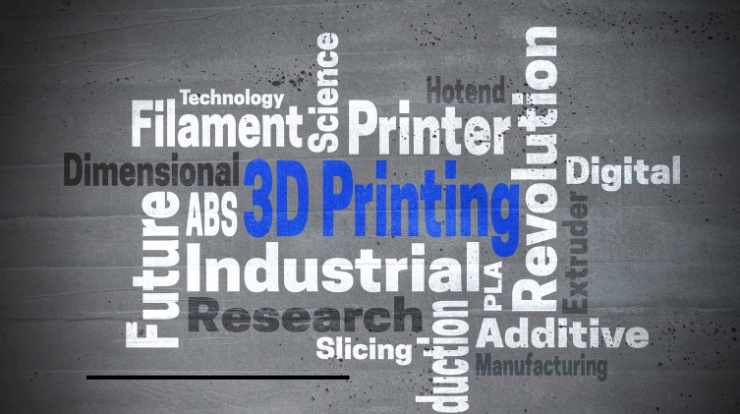The concept of "distributed manufacturing" is fundamentally changing the landscape of production and supply chains, and its integration with 3D printing technologies is at the forefront of this transformation.
Distributed manufacturing refers to the decentralized production of goods, where manufacturing facilities are dispersed geographically, often closer to the point of consumption.
This paradigm shift contrasts with traditional centralized manufacturing models, which rely on large-scale factories and extensive transportation networks to distribute goods. In this essay, we will explore how 3D printing facilitates distributed manufacturing and the implications of this trend across various industries.
Understanding Distributed Manufacturing
Distributed manufacturing represents a departure from traditional mass production methods, offering several advantages such as reduced transportation costs, faster time-to-market, and increased customization capabilities.
By distributing production closer to consumers, businesses can respond more rapidly to changing demand patterns and market trends. Additionally, localized manufacturing reduces the environmental impact associated with long-distance transportation, contributing to sustainability goals.
Integration of 3D Printing
3D printing, also known as additive manufacturing, plays a pivotal role in enabling distributed manufacturing. Unlike subtractive manufacturing processes that involve cutting away material from a solid block, 3D printing builds objects layer by layer from digital designs.
This additive approach offers significant flexibility, allowing manufacturers to produce complex geometries without the need for specialized tooling or molds. Moreover, 3D printing supports on-demand production, eliminating the need for large inventories and reducing waste.
Advantages of 3D Printing in Distributed Manufacturing
- Customization: One of the primary benefits of 3D printing in distributed manufacturing is the ability to create highly customized products tailored to individual preferences. By leveraging digital design files, manufacturers can easily modify product specifications to meet specific customer requirements. This level of customization fosters consumer engagement and brand loyalty while minimizing excess inventory.
- Reduced Lead Times: Traditional manufacturing processes often entail lengthy lead times due to setup and tooling requirements. In contrast, 3D printing enables rapid prototyping and production, allowing companies to bring new products to market faster. This agility is particularly advantageous in industries characterized by short product life cycles and evolving consumer preferences.
- Cost Efficiency: While initial investments in 3D printing equipment and materials may be higher than traditional manufacturing machinery, the overall cost of production can be lower, especially for small batch sizes. By eliminating the need for tooling and reducing material waste, 3D printing offers cost savings over time, particularly for niche or specialized products.
- Complexity and Design Freedom: 3D printing unlocks new design possibilities by eliminating many of the constraints imposed by traditional manufacturing processes. Complex geometries, intricate patterns, and lightweight structures that were previously impractical or cost-prohibitive can now be realized with ease. This design freedom fosters innovation and allows manufacturers to create products with enhanced functionality and aesthetics.
- On-Demand Production: Traditional manufacturing often relies on forecasting and mass production to meet anticipated demand, resulting in overproduction and excess inventory. With 3D printing, products can be manufactured on-demand, reducing inventory holding costs and minimizing the risk of obsolete stock. This just-in-time approach improves supply chain efficiency and responsiveness to market fluctuations.
Applications of 3D Printing in Distributed Manufacturing
- Consumer Goods: In the consumer goods sector, 3D printing enables the production of personalized products such as custom-fit apparel, footwear, and accessories. Companies can offer consumers the option to customize products online and have them manufactured locally, reducing lead times and transportation emissions.
- Medical Devices: 3D printing is revolutionizing the healthcare industry by facilitating the production of patient-specific medical devices, implants, and prosthetics. By digitizing patient anatomy and leveraging advanced materials, healthcare providers can deliver personalized solutions that enhance patient outcomes and improve quality of life.
- Automotive and Aerospace: In the automotive and aerospace industries, 3D printing is used to manufacture lightweight components with complex geometries, such as engine parts, interior components, and aircraft components. By reducing weight and optimizing designs, manufacturers can improve fuel efficiency, performance, and safety.
- Construction: In construction, 3D printing is employed to fabricate building components, modular housing units, and architectural structures. By utilizing locally sourced materials and digital design files, construction companies can erect buildings quickly and cost-effectively, especially in remote or disaster-stricken areas.
- Electronics: 3D printing is also making waves in the electronics industry, where it is used to produce circuit boards, housings, and other components. Additive manufacturing enables the rapid prototyping and customization of electronic devices, accelerating product development cycles and fostering innovation.
Challenges and Future Outlook
While 3D printing holds immense promise for distributed manufacturing, several challenges remain, including material limitations, scalability issues, and regulatory considerations.
As technology continues to advance and adoption rates increase, these challenges are likely to be addressed, further driving the integration of 3D printing into distributed manufacturing ecosystems.
In conclusion, the integration of 3D printing technologies with distributed manufacturing is reshaping the way goods are produced, distributed, and consumed across various industries.
By enabling customization, reducing lead times, and offering cost-efficient production solutions, 3D printing is empowering businesses to meet evolving consumer demands while driving innovation and sustainability.
As the technology continues to evolve, its impact on distributed manufacturing is expected to deepen, ushering in a new era of localized production and supply chain resilience.


No comments yet